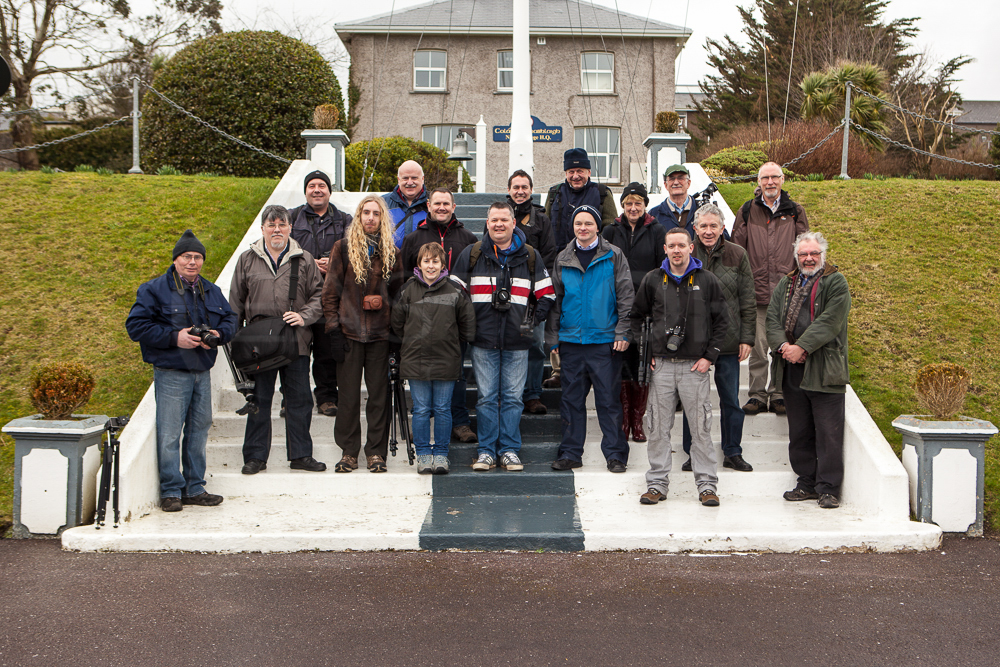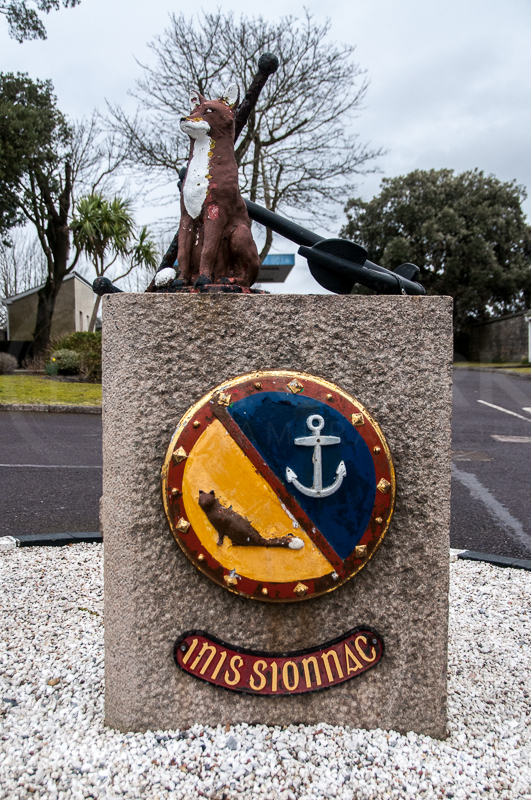On Saturday 8/3/14, ECCG members visited the Naval Base at Haulbowline, in Cork harbour. While the weather wasn’t ideal, it didn’t dampen the enthusiasm for the tour which was lead by Petty Officer, Brian Murphy.
 While being a modern military base, its long and illustrious history was inescapable with historic buildings, a martello tower and a nameplate commemorating a 19th century Royal visit, featuring among the reminders of times past. Records show a continuous military presence on the island since 1602 when the island was fortified against seaborne attack.
While being a modern military base, its long and illustrious history was inescapable with historic buildings, a martello tower and a nameplate commemorating a 19th century Royal visit, featuring among the reminders of times past. Records show a continuous military presence on the island since 1602 when the island was fortified against seaborne attack.
In 1720 the first yacht club in the world, now known as Royal Cork Yacht Club, was founded in Haulbowline. In 1806 the first naval presence was established on the island and in 1865, work commenced on the building of the Naval Dockyard and Drydock which was finished in 1884 but didn’t become operational until 1894. Haulbowline was an important support base for the Royal Navy and US Navy during WWI.
In 1921 the Irish Free State was established but Britain kept control of the seas and “Treaty Ports” of Cork, Berehaven and Lough Swilly (handed back in 1938). Haulbowline was handed over to the new Irish Free State in 1923 and was kept on a “care and maintenance” basis until 1939.

In September 1939, the Government purchased 6 Motor Torpedo Boats and the Marine and Coastwatching Service (a forerunner to the modern Naval Service) was established at the Naval Base and in 1946, the Government established the Naval Service as part of the Defence Forces at Haulbowline to patrol Irish Waters.
Haulbowline island – known as “Inis Sionnach” – “Fox Island” in the Irish language – has been home to the Naval Base and Dockyard since 1946.
Many thanks to P.O. Murphy and his colleagues at the Naval Base for the welcome given to us and for sharing their knowledge and facilities with us during our visit.
Check out some images from our visit below. Mouse over the images to reveal the slideshow controls and photographers’ names. At the beginning of the slideshow are four interesting black and white images shot by David Hegarty on an Ondu Pinhole camera.
[slideshow_deploy id=’1952′]

